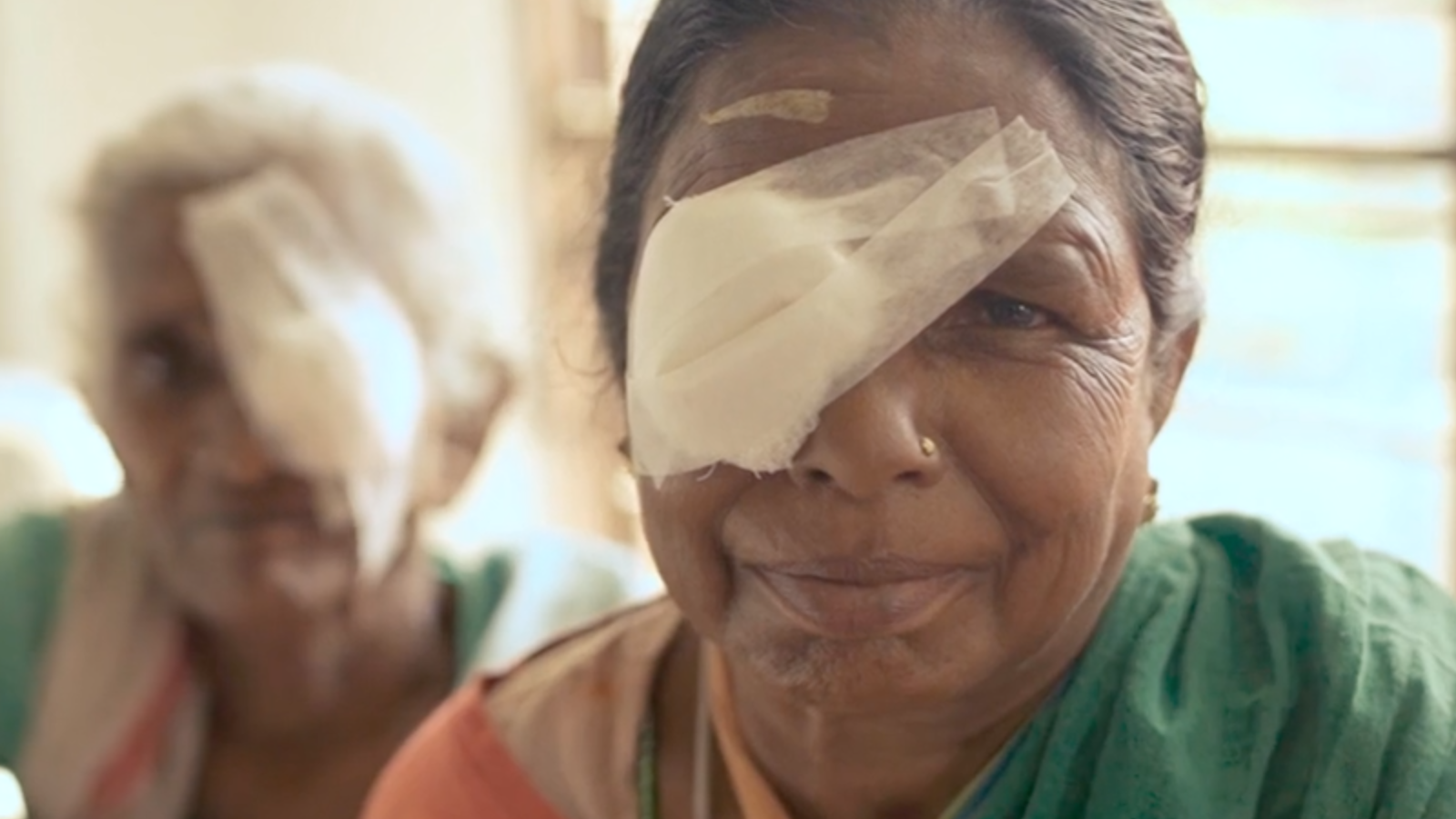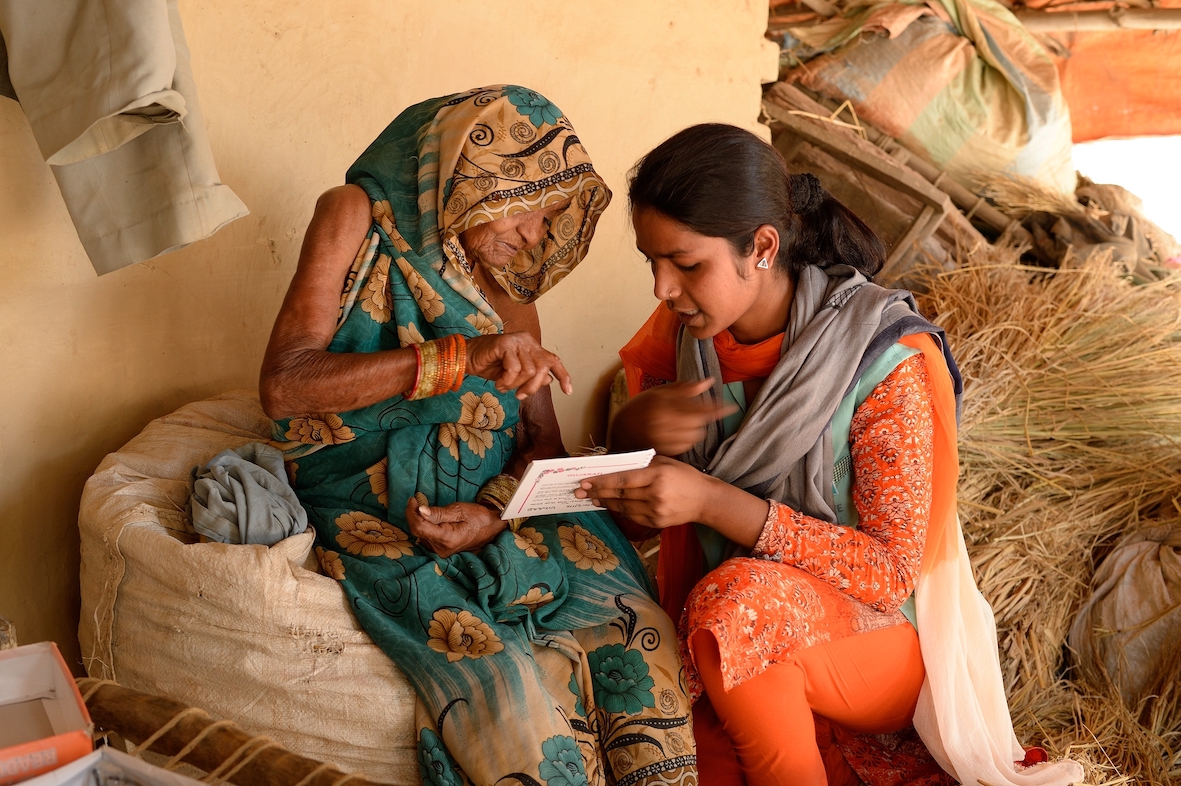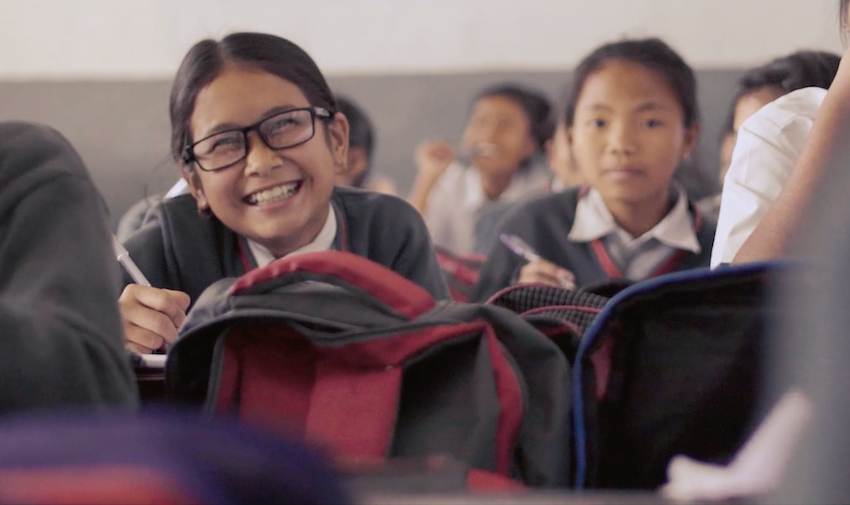
Debunking Eye Health Myths in Rural India
NorQuest College
Meera*, a 68 year-old woman living in Tikri Panchayat India, knew her vision was failing. Her work in the home became increasingly difficult and she was unable to recognize people who came to visit. Because her family had very little means, Meera did not seek medical attention – fearing that the cost of examination and treatment would burden her loved ones. She held no hope of regaining her eyesight.
India is home to nearly 25% of the world’s visually impaired people. Roughly 270 million Indian people lived with vision loss in 2020 - 9.2 million of whom are blind. Of these 9.2 million, it is estimated over 80% could have had their vision saved with early detection and simple treatment (Maitra & Rowley, 2021) (WHO World Report on Vision, 2019) (The Lancet Global Health Commission, 2021). Despite the Government of India’s support for eye health care, members of India’s most disadvantaged communities, such as rural women, remain least likely to access eye health services for many reasons, including cost, the inability to travel, and the myths surrounding eye health. These myths include misconceptions that poor eye health indicates poor general health or sinful behavior in a past life. Women with glasses or poor eye health are seen as less marriageable.
Supported by FIT, NorQuest College, along with their local partners Operation Eyesight India and Rotary Eye & ENT Hospital (REEH), tested an innovative solution aimed at improving eye health and dispelling eye health myths in 15 villages in the Udhampur block of Udhampur district, in the state of Jammu and Kashmir, India. The innovation recruited, trained, and equipped eight local female community health workers to provide eye health services in a Mobile Vision Centre staffed primarily by women. The workers provided education on women and girls’ eye health to help dispel myths and eradicate stigma. The centre also treated men and boys in the target communities.

NorQuest’s gender equality strategy involved improving women’s access to information by leveraging pre-existing channels. By supplying self-help groups with information about women and girls’ eye health needs, the project team supported women’s access to information.
During the innovation, community health workers visited Meera’s home as part of a door-to-door screening initiative. They discovered that she had a mature cataract in her eye and counselled her about the disease and its treatment – a completely safe, pain-free and cost-free surgery. On June 10, 2022, she underwent surgery at the Rotary Eye and ENT Hospital and regained her vision. She now encourages others in her community to seek treatment.
By the end of the innovation testing period, the number of men and women who still adhered to eye health myths and stigma dropped dramatically, with the majority of participants (83%) reporting a decrease in these beliefs. A total of 27,231 people (90.8% of village residents, both men and women) were educated on eye health, including the importance of eye care for women and girls, and screened for eye health ailments. By the end of the test, 154 people were transported to a health care centre. Of these, 39 women and 28 men had cataracts and all received operations.
In addition, 15 women from the communities who were patients became eye care ambassadors, encouraging others to seek eye treatment and care. They volunteered to visit different villages in the area with LFCHWs to discuss their experiences and felt that they had something worthwhile to share. They participated in community awareness activities and encouraged other community members to engage in early screening and treatment of their eye ailments.

The Gender Specialist explained that the project seemed to have an impact on gender and status beyond immediate eye health. This was evidenced in the discussions she had with participants where she observed that there has been a significant attitude change in the communities following the test. Women and men do not have equal decision-making status, but discussions indicated movement in that direction.
“I asked whether glasses can be a hindrance for marriage, and they all said no, not at all. Glasses can never be a hindrance because they are an instrument that helps to fix the eyes, and by wearing them, we can do the work. They said that in the past, they had no idea about the importance of wearing glasses. While speaking with the women and men, I realised that the attendees understood the importance of eye health in day-to-day life.”
*Name has been changed to protect subject identity

